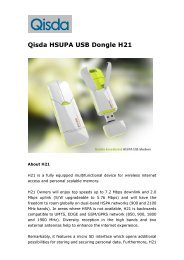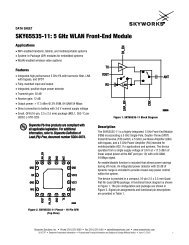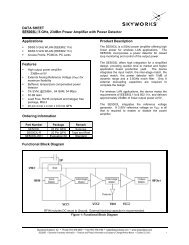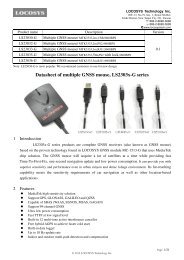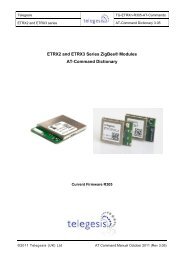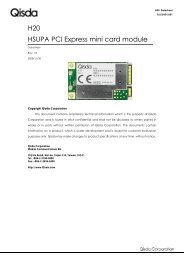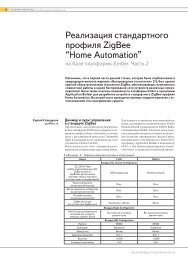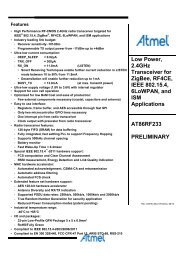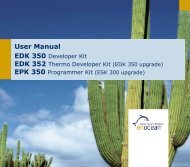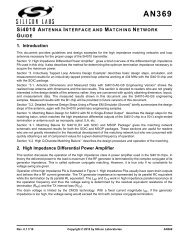Si4311 315/433.92 MHz FSK Receiver - Wless.Ru
Si4311 315/433.92 MHz FSK Receiver - Wless.Ru
Si4311 315/433.92 MHz FSK Receiver - Wless.Ru
You also want an ePaper? Increase the reach of your titles
YUMPU automatically turns print PDFs into web optimized ePapers that Google loves.
<strong>Si4311</strong>3.4. Bit Time BT[1:0] SelectionTable 8. Carrier Frequency SelectionPin 6 (<strong>315</strong>/434)Frequency [<strong>MHz</strong>]0 <strong>433.92</strong>1 <strong>315</strong>The <strong>Si4311</strong> can operate with data rates of up to 10 kbps non-return to zero (NRZ) data or 5 kbps Manchesterencoded data. However, <strong>FSK</strong> modulation uses other encoding schemes, such as pulse width modulation (PWM)and pulse position modulation (PPM) in which a bit can be encoded into a pulse with a certain duty cycle or pulsewidth (see Figure 4).Digital Data“1” “0” “1” “1”NRZEncodingManchesterEncodingPPMEncoding1000 usFigure 4. Example Data Waveforms100 usIn order to set the data filter bandwidth correctly, the shortest pulse width of the transmitted encoded data shouldbe chosen as the bit time. In the PPM example shown in Figure 4, the shortest pulse width is 100 µs, so the bit timeis chosen as BT = 100 µs even though the actual data rate is 1 kbps (1000 µs). After finding BT, Table 9 can beused to find the bit settings for pins 14 and 15, BT[1:0]. In this PPM example, BT[1:0] is set as logic BT1 = 1 andBT0 = 1 or BT[1:0] = (1,1) since BT = 100 µs.Table 9. How to Choose BT[1:0] Based on the Bit TimeBit Time [us] BT1 (pin 14) BT0 (pin 15)BT ≥ 1000 0 01000< BT ≤ 500 0 1500 < BT ≤ 200 1 0200 < BT ≤ 100 1 110 Rev. 0.5



